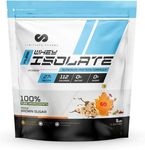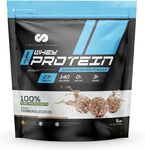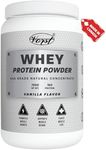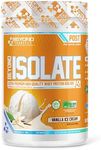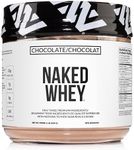Buying Guide for the Best Whey Protein For Diabetics
Choosing the right whey protein as a diabetic is all about understanding how the product fits into your health needs and lifestyle. Whey protein can be a helpful supplement for managing nutrition, but it's important to look beyond just the protein content. You should pay close attention to the ingredients, especially those that can affect blood sugar levels, and consider how the product will fit into your daily routine and dietary preferences. Always consult with your healthcare provider before adding any supplement to your diet, especially if you have a medical condition like diabetes.Sugar ContentSugar content refers to the amount of sugar present in each serving of the whey protein. This is crucial for diabetics because high sugar intake can cause spikes in blood glucose levels. When comparing products, look for those labeled as 'no added sugar' or 'low sugar.' Typically, products with less than 2 grams of sugar per serving are considered low. If you are sensitive to sugar or need to keep your blood sugar tightly controlled, opt for the lowest sugar content possible. Always check the nutrition label, as some flavored or mass-market proteins may have hidden sugars.
Carbohydrate ContentCarbohydrate content includes all forms of carbs, not just sugars, and is important because carbs can also impact blood sugar. Whey proteins can range from almost zero carbs (isolate forms) to higher amounts (concentrates or blends). If you need to manage your carb intake strictly, look for whey protein isolates, which usually have less than 3 grams of carbs per serving. If your diet allows for a bit more flexibility, a concentrate with moderate carbs may be acceptable. Always match the carb content to your daily dietary goals and how your body responds to carbs.
Protein Content per ServingThis tells you how much actual protein you get in each scoop or serving. Higher protein content is generally better for muscle maintenance and satiety, but the right amount depends on your dietary needs and activity level. Whey protein isolates often provide 20-25 grams of protein per serving, while concentrates may offer slightly less. If you are using whey protein to supplement your meals or as a snack, aim for a product that provides at least 20 grams per serving. If you have specific protein targets set by your healthcare provider, use those as your guide.
Type of Whey ProteinThere are mainly three types: concentrate, isolate, and hydrolysate. Concentrate contains more carbs and fats, isolate is more purified with higher protein and lower carbs, and hydrolysate is pre-digested for faster absorption. For diabetics, whey protein isolate is often the best choice because it has minimal carbs and fats, reducing the risk of blood sugar spikes. However, if you tolerate a bit more carbs and want a less processed option, concentrate can work. Hydrolysate is usually reserved for those with digestive issues or specific medical needs.
Artificial Sweeteners and AdditivesMany whey proteins use artificial sweeteners or flavorings to improve taste without adding sugar. Some people may be sensitive to these ingredients, and certain sweeteners can still affect blood sugar or cause digestive discomfort. Look for products with natural sweeteners like stevia or monk fruit if you prefer to avoid artificial additives. If you have a history of sensitivity or want to keep your diet as clean as possible, choose a product with minimal ingredients and no artificial colors or flavors.
Digestibility and AllergensDigestibility refers to how easily your body can process the protein, and allergens are ingredients that might cause allergic reactions. Some people with diabetes also have sensitivities to lactose or other ingredients in whey protein. If you are lactose intolerant, look for whey protein isolate or products labeled as lactose-free. Always check the ingredient list for potential allergens like soy, gluten, or artificial additives if you have known sensitivities.
